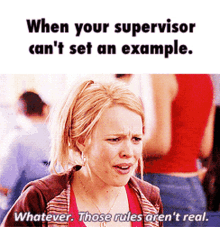As a father and son, I am very familiar with the phrase, “Do as I say, not as I do!”. This phrase might work with parents talking to their kids, but it sure does not work with leaders in business. Over the years I’ve observed that senior leaders tend to focus on holding leaders in the middle (LIMs) accountable while skipping over themselves. Hmm…If we are to hold everyone on our team accountable, this means it starts with us first. I’ve noted in my coaching sessions that in instances were there is a lack of self-awareness, true leadership accountability often goes through the window. It’s to get real with ourselves though, precedence is set at the top. Whatever rules or standards you implement within your team, apply to you too. Grab some coffee and a muffin, it’s time we hold each other accountable.
Accountability is set by precedence
“Most leaders lead the way they were led.”
Swinging back to our youth and interactions with our parents or guardians, you’ll see that as we age, we tend to follow similar traits we’ve observed from them. If I’m being honest, as a father of four, I’ve officially made peace with the fact that I parent like my parents. In the business world, I’ve followed a similar pattern. My mentors are people that I aspired to follow and so I adopted many of their principles.
The problem with this inherent learning process is we can also adopt some not-so-great habits. It’s on us to mindfully separate the good from the bad and only absorb the best.
A Case Study on a Leader’s Precedence with Poor Accountability
 What I’m about to use as an example is something you may well be familiar with – especially if you’re in a LIM role.
What I’m about to use as an example is something you may well be familiar with – especially if you’re in a LIM role.
At Business A, this company’s head does not consistently conduct his weekly one-on-one meetings with his senior leaders. Instead, he always finds exceptionally great reasons to cancel or reschedule. Truly, he could be up there with any talented magician, knowing just when to disappear at the right time (for him).
Our selfish leader continues as such until a few months or even years pass, when suddenly everything he’s managed to sidestep unravels. He realizes the business is failing and/or barely hanging on by a thread. Staff has run amuck! Where are all his leaders and why aren’t they doing their job?! How could they be so out of touch with their team members that things have gone down…ehmm…the toilet. His finger points to them but truthfully there are four more rightfully pointing right back at him, after all, he started it. As the head of the company, with his own reporting staff/LIMs, how could he not know that his LIMs did not know that their staff were experiencing issues.
 A timeline of what went wrong:
A timeline of what went wrong:
- By not holding himself accountable as a leader, he forfeited being one. In fact, he chose not to coach his LIMs or even hold one-on-one discussions to brainstorm, train or troubleshoot issues with the people he led.
- His LIMs, went with being coached and left to their own devices operate in a similar manner. They’ve got no time to meet with staff, they’re probably trying to out their own fires with no guidance from above.
- What happens to the LIMs’ staff? Well, there’s little to no accountability, so for them, the job is nothing more than a paycheck. If the business won’t invest in them so they can do their job better, then what’s the point? If there’s little to no job training and there is no coaching of their craft, there can be no team or company morale.
Final Thoughts on Leadership Accountability
As Leaders of leaders, we have the responsibility to hold those we lead accountable. However, we’ve got to set precedence by practicing it ourselves and leading by example. Accountability is about caring for those we lead and ensuring every team member is doing their part to make the team successful and powerful. In next week’s post, part two, we’ll take a look at what can happen when we practice selective leadership accountability.

If you’ve found yourself guilty of any of the above, no worries, I can help. Reach out for a session, workshop, keynote presentation or read one of my bestselling leadership books.






